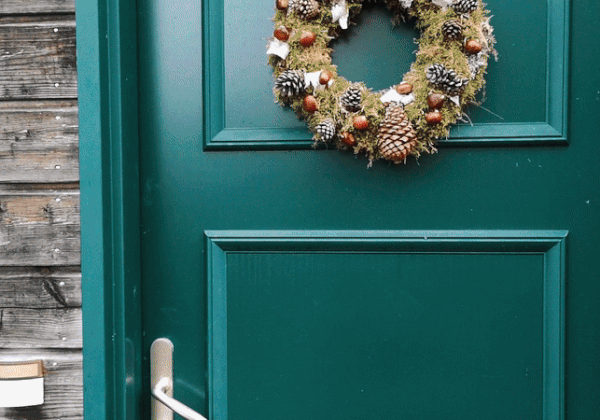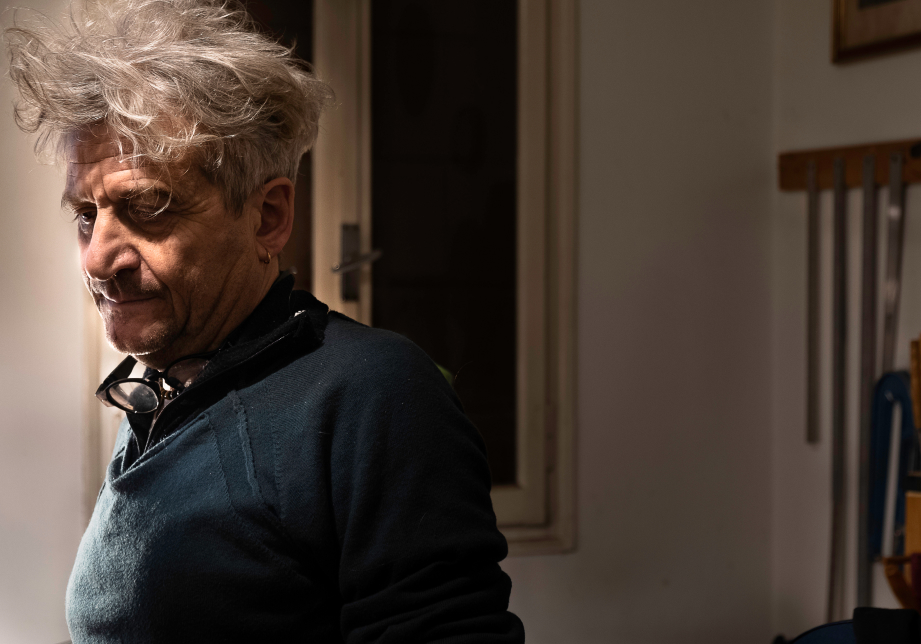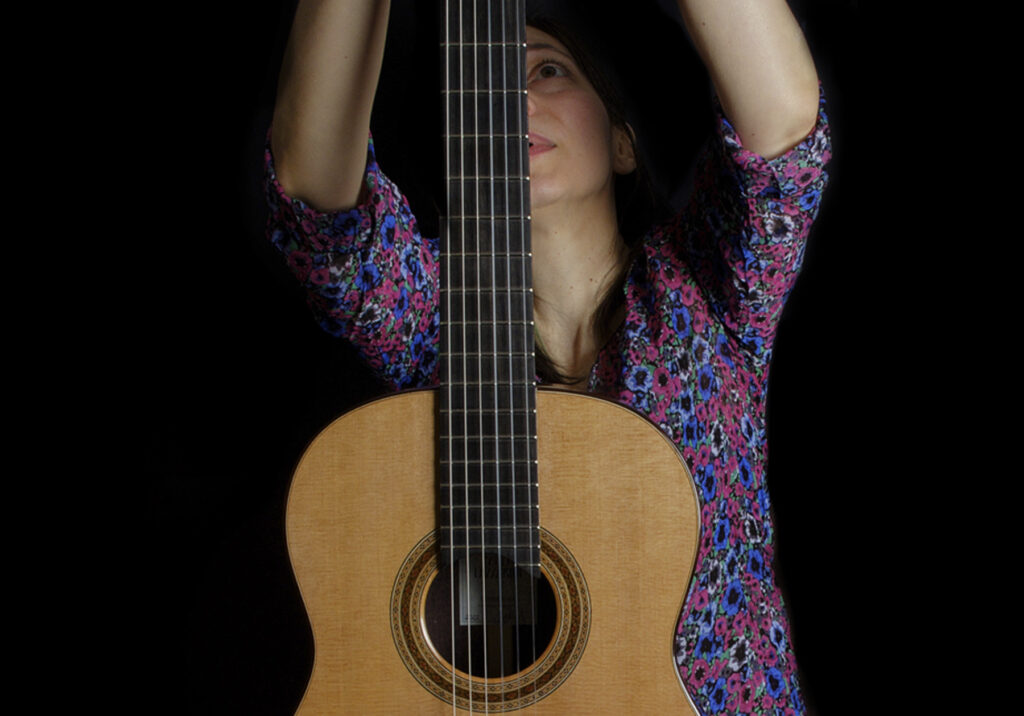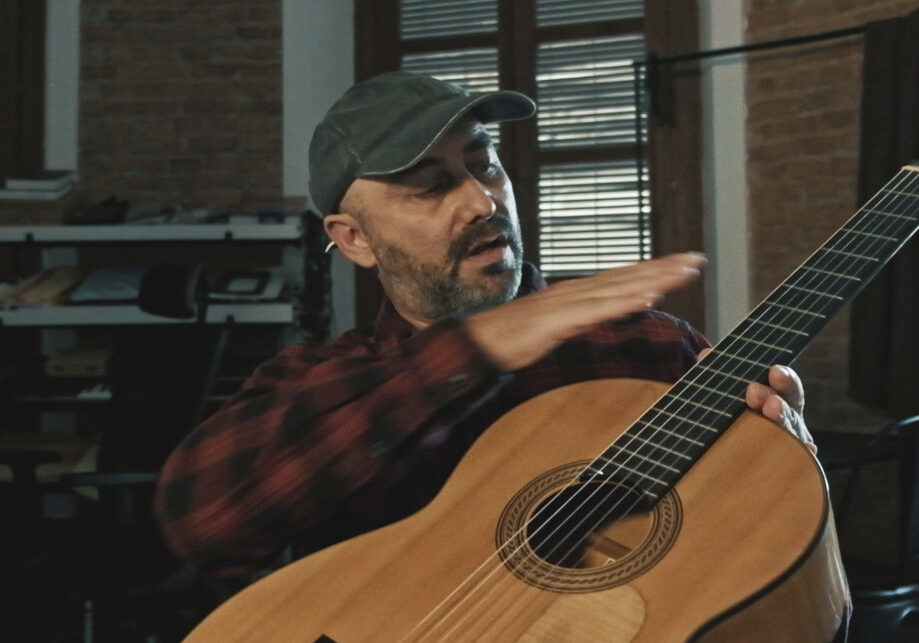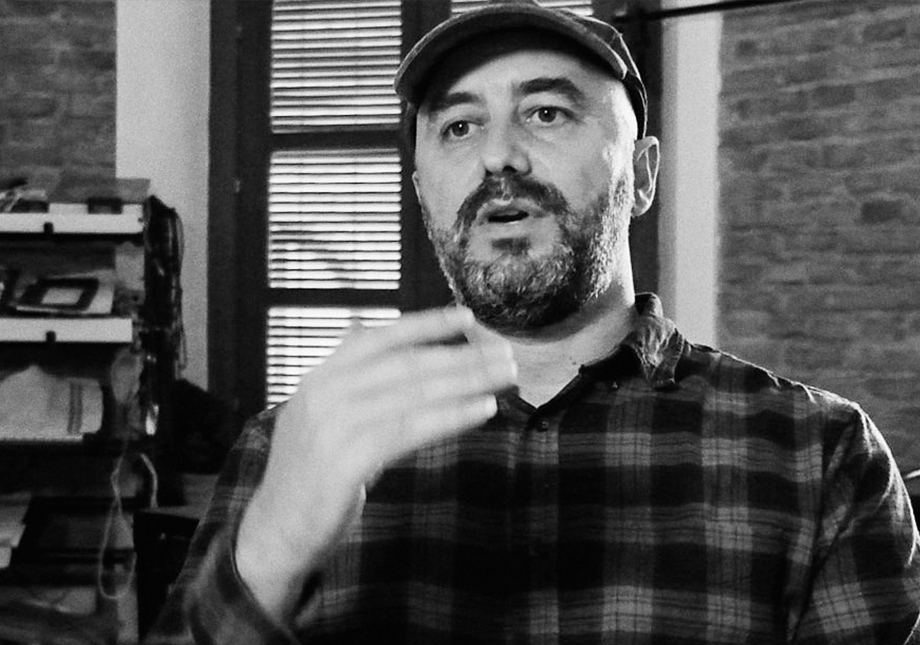
©MaderaGuitarras
Interview with this great Spanish guitar maker in his guitar workshop located right next to the beach of the Mediterranean Sea. In La Cala del Moral, a small coastal village only a few kilometers from the big city of Málaga and the International Malaga Airport in the south of Spain.
Pablo Requena is also very active on Youtube where he has a great channel he teaches through videos how to build traditional guitars. It is probably the most interesting and successful channel on the internet on this subject which has done so much to spread traditional guitar making.
Pablo since this year also gives the possibility to learn how to build a guitar with very details online videos in our opinion are the best video series ever made on it. In his own words:
“This year I have launched an online guitar-making course, a step-by-step video series available to stream online. “How to Build a Classical Guitar from Scratch” is something I have wanted to create for a very long time. I’m so happy to be able to help make the guitar-making process accessible for everybody from their own homes.” For more information please visit www.onlineguitarmakingcourse.com
Pablo’s guitars are of a very high quality which we admire a lot here at Madera and in this interview in which Pablo speaks with his well-known eloquence you can know about his way of construction, his approach, the tools he uses, his wood preferences, his favorite guitar makers in history…
INTERVIEW TRANSCRIPTION
-Pablo Requena organizes guitar-making courses
in his workshop on the coast of Málaga.
How long have you been organizing these courses?
I’ve been teaching for a long time
maybe about ten years or more
making guitar courses in Spain
about 10 years ago
I organize courses for small groups
maximum 3 people
cause in that way I make sure
that all guitars are going to
come out really good
people all around the world come
and they enjoy the weather here
and we enjoy making a guitar
How many students have you had so far?
not sure but the last time I counted
I think around 200 hundred
I feel very happy that sometimes
some students are going to
end up making guitars as a living
who they started with me
it is great cause it is a way
to pass a tradition and in a job
that you know nowadays there are no
so many guitar makers
and some people don’t think
a guitar as an instrument
you can make yourself
but when you put in somebody’s mind the concept
of building a guitar for theirself
they think oh! really!?
that could be a special thing to do!
and that is the beginning of
that kind of dream
and t is a reality
cause you just come and do it
The course is for one month
5 Days per week
6 hours a day
Making a guitar from start to finish
Exactly, that’s it
and you make the guitar
from beginning to end
exactly.
we start with the raw materials
we don’t use any kit or
premade components
the idea is to construct the instrument
completely from scratch
so people can have a true idea
of what means to build a top end
classical or flamenco guitar
so we start with the soundboard
the back the sides the neck…
and we build each component individually
to a certain stage
which takes about two weeks
and the second two weeks of the course
it is about working on the guitar together
honestly when people see the guitars
we make here
and I say see this is
what you are going to make
they go: “oh really?
it is not going to be like that
you make a guitar for so long
I am sure I cannot do it ..
but actually, they do it!
and I had people that
are near in tears of emotions
of their satisfaction
cause they think like wuau!
I’ve been able to build this
and to such standard
so it is a very special thing
people don’t forget it too easily
What is your approach to guitar making?
for me the guitar style I am more interested
are the old Spanish traditional guitars
Torres, Manuel Ramirez…
Santos Hernandez, Barbero…
those guitar makers came from
the Ramirez workshop or family
that is where my inspiration
has ever being
in finding out
how the Spanish makers
made the guitars
and try to find out how they did it
what they were thinking
to be able to produce what they did
and also I like working with my hands
I suppose that is why I do this
I use tools and so on
but I try to make as much as I can by hands
Another important guitar maker for me
is Hauser
from Germany but also influenced by
the work of Torres and Santos Hernandez
I feel Hauser had a Special Touch
He understood the instrument
I’ve got these Hauser plans
I love those plans
cause if you just follow the plans
you are going to end
doing something that is pretty good
so basically that is where I am
between Torres and Hauser
and all the old Spanish makers
Are you not interested in
modern classical guitar-making techniques?
I won’t say I don’t have interest
I have built many lattice guitars
and many instruments that are
far away from the tradition
but what I feel is that
for me, this is what I express best
what I want to do
It is a bit hard to explain but
as much as I respect all those
modern approaches to making guitars
I feel that they have a lot of
good benefits
but I also think they don’t work so well for me
and I always come back to the same
it is like at the end I always say:
no, I want to build with my fan bracing system
and that is what I feel I can
connect well with the instrument I am making
we all have different ways and
understanding how we want to make things
and for me, that is what I am more
incline to do things
but I also looking to do something new as well
so when someone asks me
Pablo, can you build me a lattice guitar?
I say: of course, I’d love to do that
cause it is a way to build in a
different ways and use different techniques..
and pushing the boundaries in a way
and taking me out of my comfort zone
and I enjoy that as well
but The traditional Spanish guitar
gives you a range of colours
a range of tones that I think they are missing
in some of the other modern techniques
Talking about the guitar we have here made by you
we see that it is made in ebony back and sides,
and this is not usual.
Can you tell us a little bit about it?
It is not the main timber I use though I used it a few times
in the past. But it is a quality of tone I like.
It gives a nice bright and projecting tone.
Very much like what you can get from Brazilian Rosewood.
It has that kind of density and texture.
But for the sound, I am looking forward to hearing it.
I cannot really tell now.
something I like to do on the guitars
is this (Pablo taps the top of the guitar several times)
And it depends where you tap it
you are going to have different responses
but I like doing it in the bridge area
and that already gives you a sense of the character
of the instrument
so that tells me this guitar
by the time is finished
is going to have an average of
and overall pitch of around F#
maybe a bit higher
but is not going to be G
that is what this is giving me
basically is a combination of the back
is responding with the soundboard
to end up giving that result at the end
and something that I’ve noticed in the past
if you think about people
like Andres Segovia for example
he played guitars that were on F#
and if you think about
other names of that level of playing
when you look at the guitars they were playing
you end up realizing that
that is what they wanted as well
so that made me think if
this is what those players of that level wanted.
(playing guitars in F#)
to me is because when
you have a guitar on F#
you get the best out of the instrument
and you have good balance and clarity
and that rich bass
that doesn’t disturb the trebles
and that kind of trebles that can fly as well
so for me is a winning approach
how do you tune the guitar as a whole
to the note you want it?
from day one
you need to work with that in mind
you only get that note from the instrument
because of what you’ve done in the wood
or in the soundboard
when it was an independent element
and you get that with different measures
and thickness on the wood…
exactly, the thickness of the soundboard
is very important
the kind of bracing that you are using
and the size of the bracing
Do I have a soundboard here? Let me see..
no, I don’t have it here
but basically that the idea
that you want to have
the right amount of reinforcement
on the soundboard
cause all the internal bracing is reinforcements
that make sure the soundboard
is not going to collapse
with the tension of the strings
but you want to find that balance
in between the reinforcements
not being too heavy
because if they are too heavy
the guitar is very strong
but you also kill the sound
but you don’t want to go too light
cause then the soundboard will start
distorting and
it is not going to survive
for very long
you need to find a balance
between the guitar
is not going to lost the strength
but also is going to carriage the sound
so you gain all of that
with the thickness of the timber
sizes of the braces
and at that point is when you start thinking about
the pitch that you want to get on the instrument
this one is made of ebony
and also it has a beautiful cedar top
a nice rosette
Do you make the rosette of your guitars
always with the same design?
I am happy to accommodate what I do
with what my client wants
but I tend to work more or less
with the same designs
this one is not a copy of Hauser
but sort of inspired by that direction
I like to put the Spanish colors there
… little subtleties..
I always check with my clients
but I think is a nice little touch
another design I use a lot
I’ve got one here
this is a very simple design
with two ropes
and a little red cross in the middle
I do two or three different designs
How do you approach the guitar
in aesthetic terms?
I like simplicity
for me in a guitar, less is more
what I try to do is
that the little details
I put it as an ornament
I try to put it as best as possible
In the Spanish guitar traditionally
there is not a lot of room to do crazy things
like you can find in electric guitars
so what you find is
that you can show off your ability
with the rosette
or with nice little features
but I like it when is subtle
when you get a lot of ornaments and features
sometimes it works really well
but it is not the way I like doing it
then the same in the head
this is not usually the design I do
here is what my client wants it
and I was happy to change it
but normally I prefer not to change
cause it is like a bit the
trademark of the guitar maker
but the same
I like to keep it simple
these little points I try to avoid them
cause it breaks off
especially on the back on the cedar
but when your client wants something
and you feel you can do it then…
that is the good thing of order a guitar
that you can personalize the instrument
he chose the wood
the rosette
and a bit the head
I suggested two or three designs
and He decided this one
Usually, the design of my head is like this
it is super simple
but I feel is functional
it is beautiful
and it doesn’t have things
are going to break easily
which wood do you prefer spruce or cedar?
oh! that is the one million dollar question
if I need to choose
I would say
have one of each
because they give you
very different things
and kind of beauty
as you probably know already
with the spruce
it takes time to develop and open up
but when you reach that
you find that kind of rich color
and warmth
that you don’t get with cedar
but then with cedar, you get
a different kind of warmth
and a different kind of color
I am not going to say that
spruce is better than cedar
or the other way around
I would say if you can have two of them
if you need to choose only one?
then I would say maybe spruce
What kind of impact does the choice of wood for the
back and sides of the guitar have on the final result?
Is it an important decision?
yes, I think it is
everybody knows that the soul of the guitar
comes from the soundboard
and we all know the experiment
Torres did with the
paper maché guitar
he was probing a point
that the soundboard
is the main element of the sound
but in my experience
and I think many guitar makers agree with me
the character of the sound can change
with the kind of timber you use
so for example, if you use
Indian rosewood or Brazilian
and compare those two
and how that can change the sound
you will notice that in general
Indian rosewood even when it is rigid
and quite strong
it has perhaps less density
than Brazilian rosewood
in general
cause Brazilian rosewood it changes a lot
cause sometimes you find Brazilian rosewood
it is less density than Indian
but generally speaking
you find that the density changes
and that has an influence on the sound
if we talk about percentages
I would say 80% is the soundboard
and 20% the rest of the timbers
even in the neck
I’ve seen people
that they believe making the neck
from rosewood or maple
encourage the projection
and the sustain
you might think well..
what has to do with the sound?
but everything has to do with it
for me I prefer to use cedar
and mahogany
cause that is the Spanish tradition
so when I am choosing the neck
I like using cedar
because is light
but I try to use cedar that is quite dense
cause again cedar can vary in density
so I like dense cedar
which is similar to the strength of mahogany
but it is lighter
For me back and sides are quite important
cause that can really determine
the kind of direction the guitar
is going to go
Is it Brazilian rosewood better than Indian rosewood or
Indian better than Brazilian for a Classical Guitar?
no I won’t say that
we are talking about personalities
it is like spruce and cedar?
yes, cause is very personal
what I hear and what I perceive
from an instrument
is going to be quite different from
what you perceive it
what I consider is beautiful
you might have a different opinion
so for me is a very subjective thing
and is down to the player
I’ve seen players that having
the choice to have Brazilian rosewood
without thinking about how more expensive
can be Brazilian rosewood
they ended up choosing Indian rosewood
cause somehow they found something
it is difficult to make a very
strong decision to what is the best wood
what is the best system
what is the best type of guitar
because I don’t think it works like that
they are all good in their own way
they all have difficulties
and it is down to the player
to be able to have the skills
and the patient to
understand the instrument
and to get the instrument to flourish
if I need to choose one
I will go for Indian rosewood
the Indian rosewood gives you
a great sound
practical
reliable
I think it has a lot of positives
yes Indian rosewood
you have a lot of stuff here..
Do we have a look?
this is for the polishing?
Do you use only french polish?
Yes that is what I do
cause I find that is the best option
for a Spanish guitar
here you can see
this has a little bit of polish
cause what I do
even when the neck is left to do
I haven’t finished it yet
but quite early I like to do a bit of polishing
and here n the head
you can see is nearly done
and the grain is so tied with ebony
it goes very fast
I like to do it early on cause
the smallest part of the guitars
like the head
are the ones that are more difficult
and you need more time and so on
so at the time, I start
polishing the guitar
I have an initial polishing
on the back
and the head is nearly done
I like mixing the shellac
so I do with this a few guitars
I usually mix more than what I need
and this is the bench where I work
so I’ve got basically the tools
I use to use the most
here are all the tools you use for a guitar?
no
I need a few more
but these are the tools I use the most
the rest of it is here
different things
I love these Japanese knives
they can go really sharp
and it is great for carving
elements of the neck
you can do a lot with the knife
and you get a really good finish
I like having my tools handy
this is the fan bracing you use?
yes, this is the one I develop
over the years
and you can see this is very traditional
7 fans
with two closing bars
and then depending on the guitar
I use a bridge part
not the rectangular but this one
or I use a bridge bar
depending on I can see the
soundboard is behaving
and the flexibility is got
on the hole, I tend to have
something across and I feel
it adds quality to the tone
and then the rest is very traditional
I like having small bars
and having just the bars
I think it gives a bit more
of a chance to the soundhole
to contribute to build the sound
you can see the bars are not very big
in general, tends to be around 3.5
by 2 mm over here
and the height is about 4 mm
Do you change depending of cedar or spruce?
yes, with cedar often
I don’t use the crossbar
but it depends on the wood in particular
sometimes I allow the wood to be thicker
the wood remains thicker in this area
and thinner around the perimeter
and that allows for the soundboard
to go in and out
and encourage the movement
apart from the traditional tools
now one of the differences we have now
from Torres is
that we have big machines
Yes, you know a drill is basic
it is very helpful to have one of these
and are very inexpensive
and they work really well
and there are a lot of jobs you can do with this
it works very accurately
we also have a sanding machine like this
it is very practical
and it does really well
and you save time
without compromising on the quality
it is finding ways to
speeding up the process
without taking away the fact that is
a handmade guitar
and here I have this
that I use with a very thin blade
with a lot of teeth
so it gives you a very thin cut
so I can cut things quite delicate
this machine has nothing to do
with guitar making
it is for my own entertainment
and here you see I have another blade
which is a lot more course
so for more rough cutting
also necessary sometimes
and here the sanding machine
which worth his weight in gold
it is very simple
this will spin
I can switch it on
it is noisy but..
you need to use it with a cleaner there
so it will suck in all the dust
and then you switch this on
you can see it spinning very fast
and here you put your wood through there
and it will level everything up
it is fairly accurate
I would say most guitar makers
professional they will have some kind of machine like this
you know some people prefer to do
everything is completely by hand
but honestly, I think it is worth to have these
and spend a bit of money on that
then you can see those bending jigs
and also those molds for different instruments I do
you can see over there
you can see some necks on the top
you can see that old instrument
haha it is just an ornament
and this is the area
I usually do the strutting
basically, I got this dish
into here
this is a 25 feet
is about 7.5 meters diameter
and this is the arch I use for the soundboard
and for the back as well
you already made the arch
yes that is right
you see these rings
because this being plywood
as you cut through into the layers
you see those rings there
it is interesting
so this is basically a gluing area
it is quite useful
and this is my workshop
and this is a place I spend
a lot of my time here
and it is great cause
it is in a nice place as well so
when I want to go out and have
a bit of fresh air
I go to have a coffee by the beach
Last question:
of all the students who have been with you
and who will be with you in the future,
what would you like them to take away from their experience
with you and the world of traditional guitar making?
For me something very important
is for the students to enjoy
working here
because if they do
it means that
they are relaxed
and they are working
in a way is going to be effective
and then the end result
it really shows
Another thing is for them
to take as much information as possible
and to be able to go home
and think they enjoyed the experience
and they took home an instrument
of really high level
and often when the students come
at the beginning of the course
I explain to them what we are going to do
sometimes they think
ummm I don’t know how is going to be
but in the end
when they see what they’ve done
they can’t believe themselves
it is really emotional at the end
you put all this effort
and all this time
and then you have this guitar
in your hands
that you have built yourself
but not only that
when you play a little bit
and you can tell uauu! this sounds amazing!!
and you’ve done it
so it is just an amazing experience
and also the guitar you took
is going to be with you
the rest of your life
and you are going to enjoy for many years
and you may pass it to your children or somebody
so it is really special thing
so thank you very much
for your time
It is a pleasure
READ MORE
READ LESS
